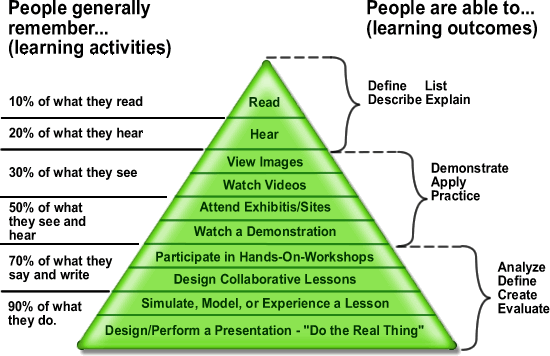|
Dale–Chall Readability Formula
The Dale–Chall readability formula is a readability test that provides a numeric gauge of the comprehension difficulty that readers come upon when reading a text. It uses a list of 3000 words that groups of fourth-grade American students could reliably understand, considering any word not on that list to be difficult. History The formula was inspired by Rudolf Flesch's Flesch–Kincaid readability test which used word-length to determine how difficult a word was for readers to understand. Edgar Dale and Jeanne Chall instead used a list of 769 words that 80% of fourth-grade students were familiar with, such as "no", "yes", and other such very basic words to determine which words were difficult. The Dale-Chall Readability Formula was originally published in their 1948 article ''A Formula for Predicting Readability'' and updated in 1995 in ''Readability Revisited: The New Dale-Chall Readability Formula'', which expanded the word list t3,000 familiar words [...More Info...] [...Related Items...] OR: [Wikipedia] [Google] [Baidu] |
Readability Test
Readability is the ease with which a reader can understand a written text. In natural language, the readability of text depends on its content (the complexity of its vocabulary and syntax) and its presentation (such as typographic aspects that affect legibility, like font size, line height, character spacing, and line length). Researchers have used various factors to measure readability, such as: * Speed of perception * Perceptibility at a distance * Perceptibility in peripheral vision * Visibility * Reflex blink technique * Rate of work (reading speed) * Eye movements * Fatigue in reading * Cognitively-motivated features * Word difficulty * N-gram analysis * Semantic Richness Higher readability eases reading effort and speed for any reader, but it makes a larger difference for those who do not have high reading comprehension. Readability exists in both natural language and programming languages though in different forms. In programming, things such as programmer comments, ch ... [...More Info...] [...Related Items...] OR: [Wikipedia] [Google] [Baidu] |
Rudolf Flesch
Rudolf Franz Flesch (8 May 1911 – 5 October 1986) was an Austrian-born naturalized American writer (noted for his book ''Why Johnny Can't Read''), and also a readability expert and writing consultant who was a vigorous proponent of plain English in the United States. "Why Johnny Can't Read - 1950's Education", Enotes.com, 2010, web: EN-Why He created the Flesch Reading Ease test and was co-creator of the Flesch–Kincaid readability tests. Flesch advocated use of phonics rather than sight reading to enable students to sound-out unfamiliar words. Personal life Flesch was an Austrian born in Vienna. He earned a Doctor of Law, doctorate in law from the University of Vienna in 1933. He fled to the United States to avoid the Anschluss, imminent Nazi invasion and antisemitism. In the United States, Flesch became a graduate student at Columbia University, where he earned a Doctor of Philosophy, PhD in Library Science. He also met Elizabeth Terpenning, whom he married. They h ... [...More Info...] [...Related Items...] OR: [Wikipedia] [Google] [Baidu] |
Edgar Dale
Edgar Dale (April 27, 1900 in Benson, Minnesota, – March 8, 1985 in Columbus, Ohio) was an American educator who developed the Cone of Experience, also known as the Learning Pyramid. He made several contributions to audio and visual instruction, including a methodology for analyzing the content of motion pictures. Early career Edgar Dale was born on April 27, 1900 in Benson, Minnesota. He received a B.A. and M.A. from the University of North Dakota and a Ph.D from the University of Chicago. His doctoral thesis was titled "Factual Basis for Curriculum Revision in Arithmetic with Special Reference to Children's Understanding of Business Terms." and is precursor for his later work with vocabulary and readability. From 1921 to 1924, Dale was a teacher and the superintendent of schools in Webster, North Dakota. In 1924, he became a teacher at junior high school in Winnetka, Illinois, where he stayed until 1926. In 1928, Dale's interest in film led to a position with Eastman Kod ... [...More Info...] [...Related Items...] OR: [Wikipedia] [Google] [Baidu] |
Jeanne Chall
Jeanne Sternlicht Chall (January 1, 1921 – November 27, 1999), a Harvard Graduate School of Education psychologist, writer, and literacy researcher for over 50 years, believed in the importance of direct, systematic instruction in reading in spite of other reading trends throughout her career. Chall became deeply committed to teaching, to the importance of children's successful reading acquisition and the need to address failing readers, to the power of research to answer practical questions, and to the merit of understanding the historical background of research questions. Though her views were often controversial, she was respected by her peers for the meticulous research. Her conclusions about the best way to approach beginning reading were unpopular when she first presented them, though they have subsequently gained acceptance in the literacy community. Chall's professional life was committed to children's successful reading acquisition, especially low S.E.S. (socioeconomic st ... [...More Info...] [...Related Items...] OR: [Wikipedia] [Google] [Baidu] |
Readability
Readability is the ease with which a reader can understand a written text. In natural language, the readability of text depends on its content (the complexity of its vocabulary and syntax) and its presentation (such as typographic aspects that affect legibility, like font size, line height, character spacing, and line length). Researchers have used various factors to measure readability, such as: * Speed of perception * Perceptibility at a distance * Perceptibility in peripheral vision * Visibility * Reflex blink technique * Rate of work (reading speed) * Eye movements * Fatigue in reading * Cognitively-motivated features * Word difficulty * N-gram analysis * Semantic Richness Higher readability eases reading effort and speed for any reader, but it makes a larger difference for those who do not have high reading comprehension. Readability exists in both natural language and programming languages though in different forms. In programming, things such as programmer comments, c ... [...More Info...] [...Related Items...] OR: [Wikipedia] [Google] [Baidu] |
